After my rather sombre previous post about Vanuatu, I thought it was time to show you something fun, and something that Vanuatu is doing SO RIGHT.
Or at least, fun for someone. I’ll confess up front that I’m writing this post because I know my parents will enjoy it! And if you happen to enjoy it too too, well, that’s an added bonus!
My parents are permaculture farmers in Hawaii. They grow every tropic fruit you’ve ever heard of, and probably some you haven’t. There are vegetables too: anything that grows well in the tropics without chemicals and fertilizers. I grew up planting lettuce and picking mangoes and washing bok choi. I love tropical fruits and vegetables: I love eating them, and I enjoy growing them (well, at least for a couple of months at a time when I’m home visiting).
So when I discovered the fruit and vege market in Port Vila, I just about died of happiness. Held in a huge open air pavilion on the waterfront, the market runs 24 hours a day from Monday morning to mid-day Saturday, and is table after table of tropical fruit and vegetables. Visiting the market was my favourite activity in Vanuatu.
I loved it so much that we went to it almost every day we were there, sometimes multiple times. We’d get off a bus in front of the market, I’d wander around it smiling from ear to ear, in a haze of delight, and then we’d go off and do whatever we were doing in town, and then come back through the market before catching a bus home. There was shade, and space to wander and inspect, and wonderful smells and colours, and not a single stallholder ‘hawking’ their wares.
I think it would be impossible not to love the market. At the front are the flower sellers, with buckets and buckets of ginger and heleconia, parrot beaks and parakeet flowers, marigolds and cockscomb. And this was the middle of winter in Vanuatu, when tropical flowers are at their scarcest! I can’t imagine what it would be like in summer!
And then, in the pavilion itself, a wonderland of fruit and vegetables. And, as far as I could determine, almost everything in the market was organic!
There were at least half a dozen different kinds of banana: ladyfingers and at least two kinds of cooking bananas, plantains and apple bananas, as well as more standard Williams-type varieties.
I bought a hand of tiny ladyfinger bananas: delicate and sweet. I like bananas, but only in small doses, so ladyfingers are perfect Leimomi sized bananas.
I also bought a single small pamelo (pamplemouse), and looked longingly at the huge piles of pamelo on some of the tables.
If you are wondering about prices, 100 vatu is worth almost exactly US$1, or NZ$1.25, so a 100 vatu hand of bananas would be US$1, or NZ$1.25.
There were bags and bags of tomatoes, from small cherry tomatoes, to bigger sandwich tomatoes. Equally popular were peppers: big bell pepper capsicums, small sweet peppers, and small hot peppers.
One of only two things I didn’t recognise in the market is shown in the photo above: it’s the bundles of round greenish fruit on stick stems (and the bag of the same fruit). A lady at one stall gave me one to try, but I’m afraid I thought it was horrible: like a blandly citrus flavoured Brazil nut. I met a tourist from Thailand who was also familiar with lots of tropical fruit, and didn’t know what it was either. (but more than likely, the next time I talk to Mum she’ll say “Oh, those are x, they are a relative of x”!)
The other thing I didn’t recogise were some sort of nuts strung on to coconut stems. I wanted to buy some and try them, but Mr D was too worried about germs, so I passed.
Most things though, I did recognise. I know and love the soursop (guanabana) in the photo above. In Hawaii I make it into the most delicious, delicate tropical ice cream.
There were punnets of what I would call thimbleberries or ola’a, but the Vanuatuans called rasberrys (no, I’m not spelling that wrong). I was amazed at how pristine they were, in their little tubs. Thimbleberries are incredibly fragile, and it’s almost impossible to pick them without smashing them. I’ve since looked them up, and it turns out they are what is called West Indian Raspberries – not the thing North Americans call thimbleberries.
There were bundles of herbs: basil parsley, and mint, cilantro (coriander), chives and lemon basil…
There were beautiful lettuces: romaine and cos, as well as softer leafy varieties. I thought the ‘packaging’ for the lettuce was so clever: a dozen heads strung onto two bits of coconut frond centre, and crossed through the stem of one head at the end, to make a bundle that would be easy to pick up and carry. I didn’t ask, but I’m sure the price must be per head, not for a whole bundle.
I also was fascinated and impressed by how they store and transport the lettuce and other leafy greens in the tropical heat: in baskets of woven coconut fronts, lined with leaves to keep them cool and fresh, and covered with more leaves.
There were chayote, or choko, as they call them in NZ. The resort we stayed at served a gorgeous steamed vegetable dish with chayote and carrots and string beans. It’s such a good vegetable for the tropics, with a very light, refreshing taste.
And beautiful daikon (Japanese radishes) with the greens intact. One of my complaints about NZ is that they don’t sell daikon with the greens on, and I love daikon greens.
There were enormous cabbages, and lovely bok choi.
And huge, beautiful carrots, with wonderful flavour: really some of the best carrots I’ve ever tasted.
There were bunches of watercress, and piles of ginger and tumeric root:
There were bundles of young fern greens, wrapped in banana leaves to keep them clean and fresh.
There were peanuts, both washed and bagged (and possibly roasted), and raw, still attached the plant, in bundles (yep, that’s how peanuts grow! That’s why they are sometimes called groundnuts).
Peanuts seemed to be a very popular snack, based on the number of people we saw walking around with the bundles of plants with roots, and the empty bundles discarded all around the market (rubbish bins were few and far between, and it showed).
The peanuts were snack food, but the market also sold the main starches of the Ni Vanuatuan diet, yams (yes, those are real yams, not the orange sweet potato that Americans persist in calling yams, or the oxalis roots that Kiwis have dubbed yams) and manioc(tapioca) roots, and taro (which I neglected to photograph).
And orange and red kumara (sweet potato), which they called kumala
And thick-skinned pumpkins:
And, fascinatingly, bundles and bundles of what I realised were sprouting coconuts, stripped of most of their husk and sold 8 or 10 at a time (shown behind me in the photo above(. It turns out sprouting coconut sponge is a traditional food in Vanuatu (clever them – imagine moist, coconut flavoured slightly sweet candy floss. What I can’t understand is why it isn’t more popular in Hawaii!)
There were other staples for cooking with: bags of charcoal (invariable in chicken feed sacks):
And faggots of wood:
My favourite thing though, as I could buy at least two a day, were green drinking coconuts with the husk cut away, for less than $1 each!
You could take them home whole, or ask the ladies sitting on the fringes of the market, busily husking more coconuts to cut the top off for you, so that you could drink them then and there (to make Mr D happy I bought straws to drink them with so he didn’t freak out about germs and tropical diseases).
You may be wondering why a city as small as Port Vila (under 50,000) has a 24 hour a day fruit and vege market. It’s actually because Port Vila is so small and poor. It’s cheaper and less work for market holders to set up for the week, and sleep behind their stalls, than it is for them to pack up and transport their goods back around the island home and then back again for the next market. And I imagine few people had fridges or ways to store the vegetables, so they had to be sold shortly after picking, and bought shortly before consuming.
As far as I could tell the stalls were collaborative village/family affairs, with multiple women (they were almost all women) watching each stalls, and trading off napping on lauhala mats behind the stalls, eating their own meals and selling goods. Periodically trucks would arrived, packed to the brim with new produce: bundles of coconuts and baskets of greens, which would be unloaded to replenish a stall. Come midday Saturday all the trucks showed up, packed up whatever remained, and take it away, with new lots brought back Sunday night (hopefully with new women to run the stall for the week, and last weeks women having a break!).
While it was popular with the tourists for its colours and the whole exotic factor, the market clearly existed primarily for the locals, which made me like it all the more. I liked knowing that any money I spent there went straight to a local family, and I liked the opportunity it gave me to interact, just a bit, with ordinary people.
My one huge regret about the market is that, staying at a resort, there was no opportunity for me to cook, and so little I could actually buy at the market. I bought as many pieces of fruit and as many coconuts as I could safely eat in a day, but could only wish that I could buy the lettuces and daikon, the green beans and manioc (OK, manioc isn’t that nice, but once every 5 years its a fun novelty). Maybe not the bitter melon though.
Mr D and I agreed that if we went back to Vanuatu we’d like to stay in accommodation with cooking facilities, so that we could really take advantage of the market.

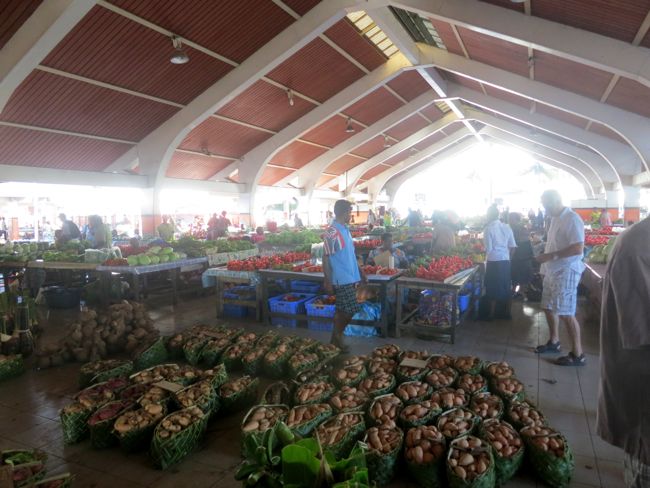
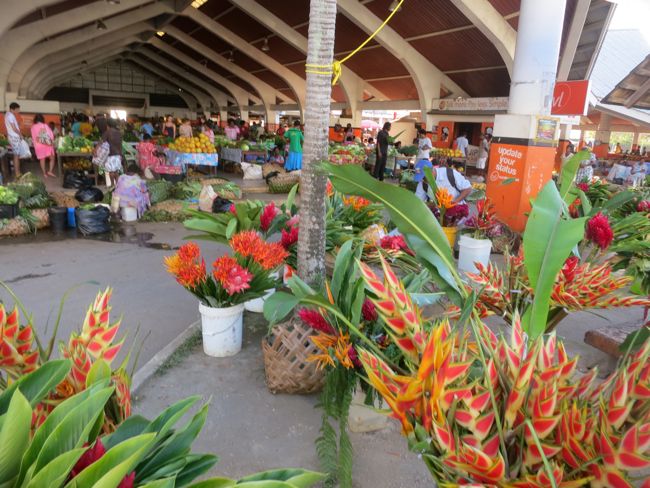
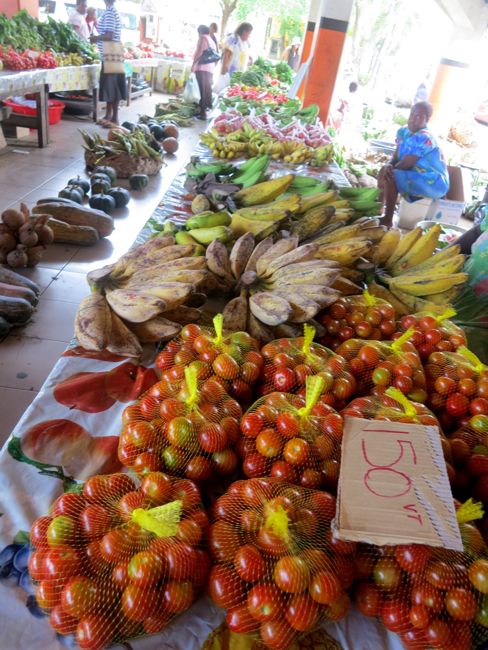
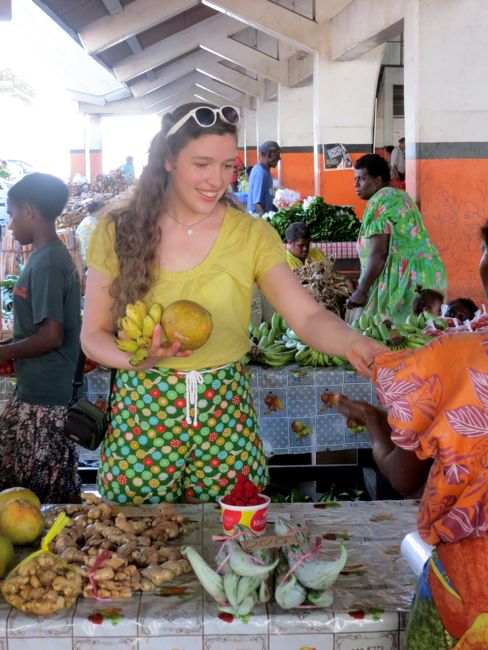
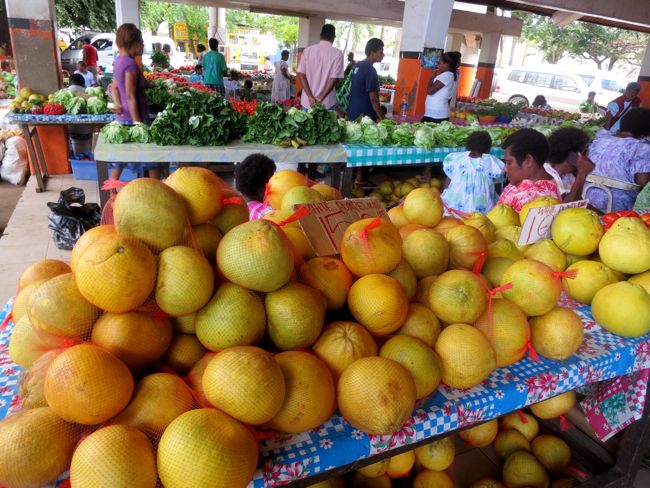
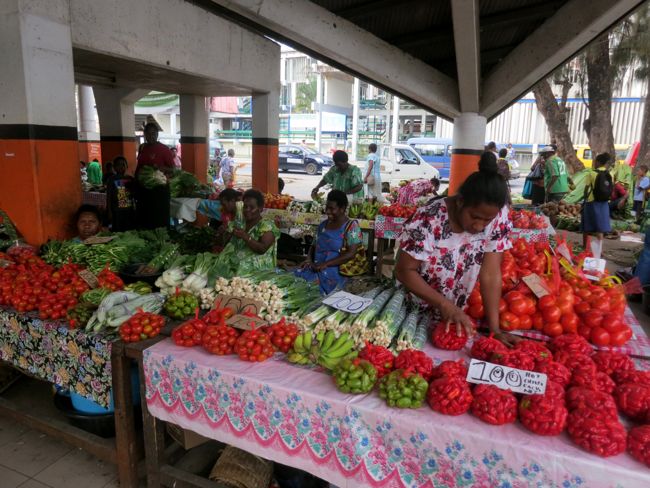
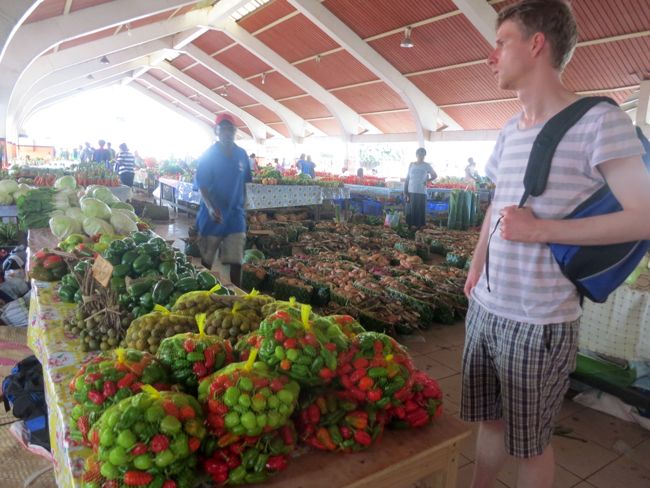
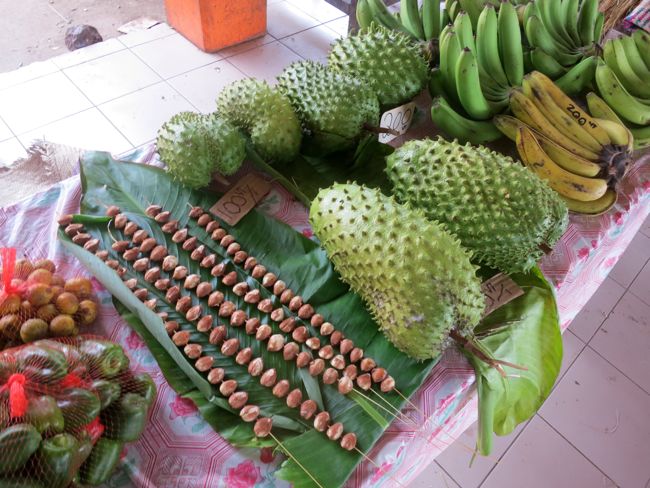
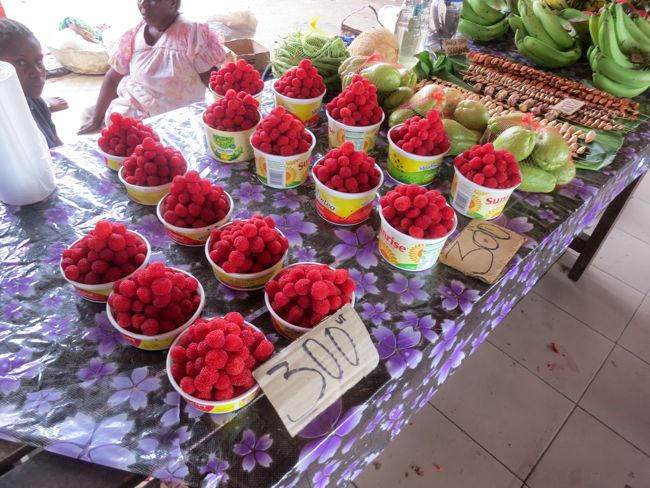
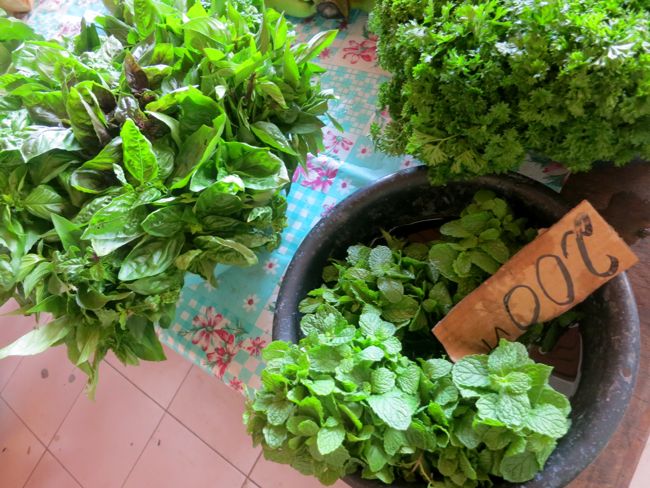

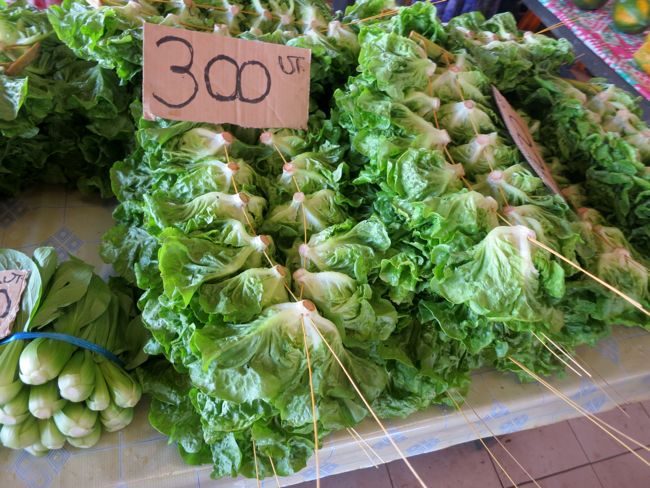

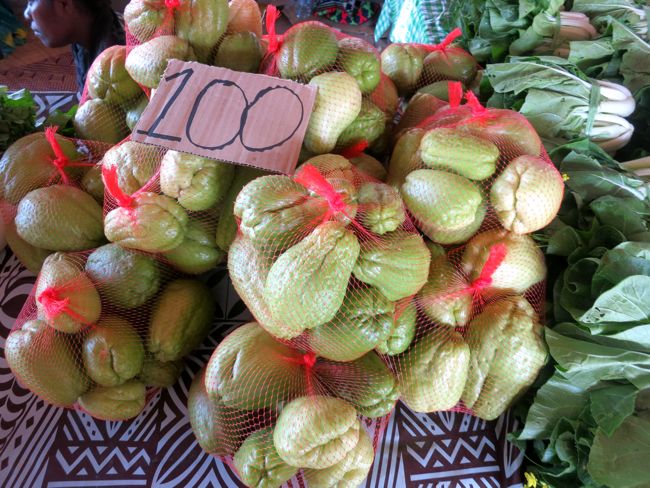
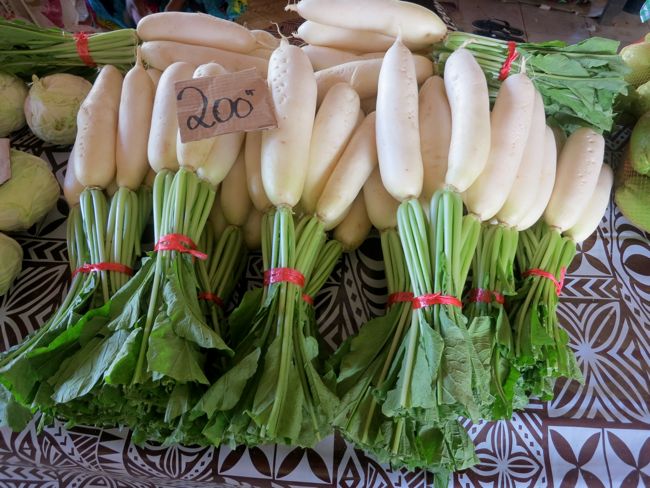
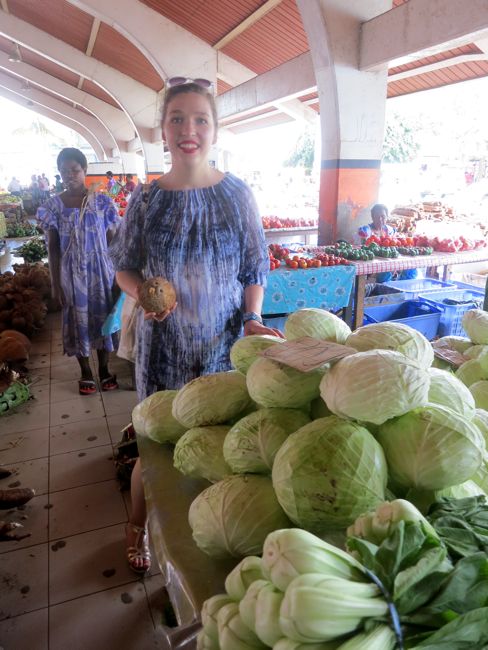
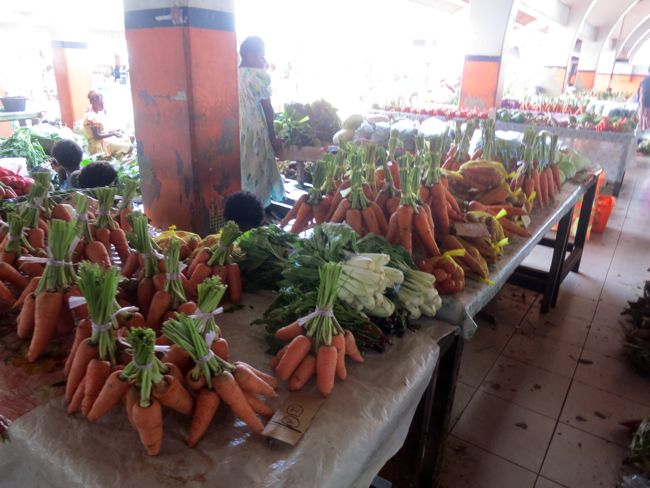

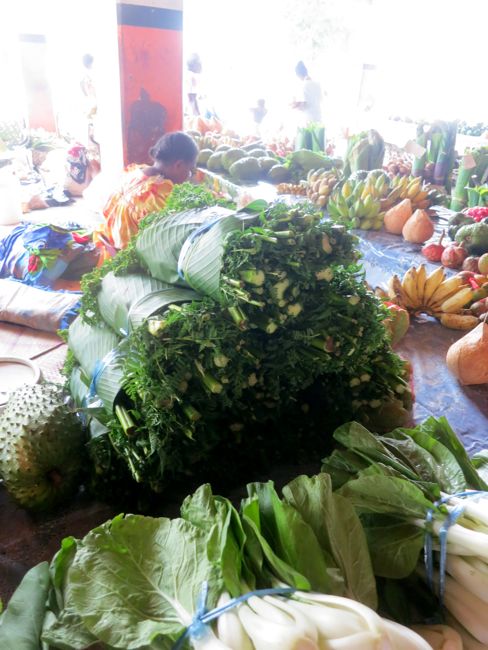
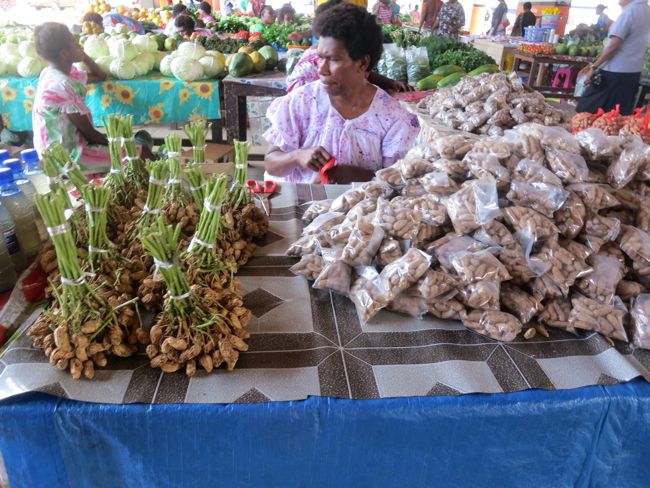
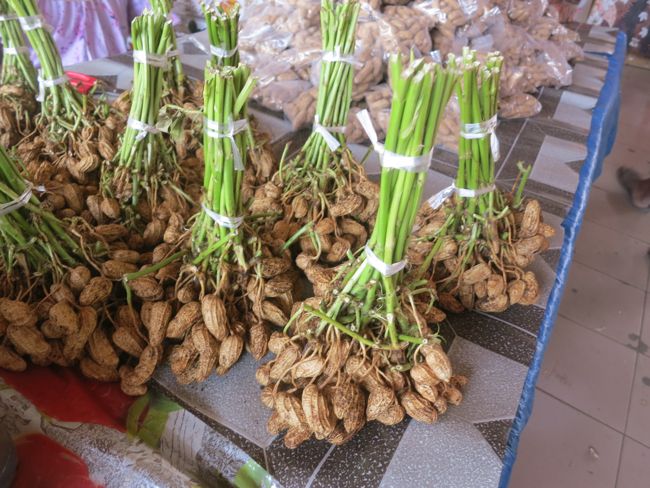
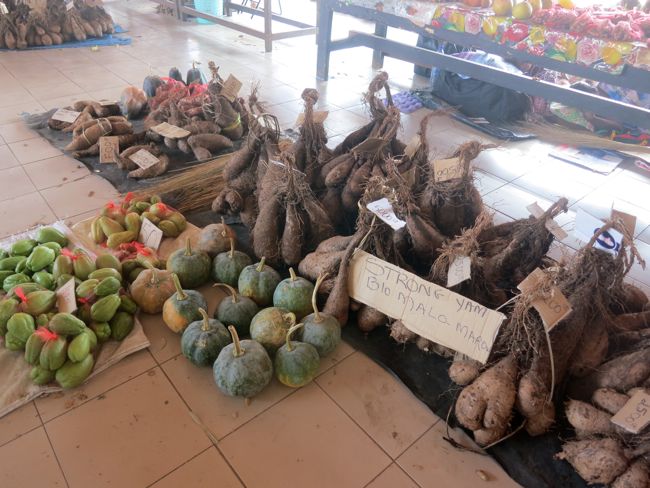
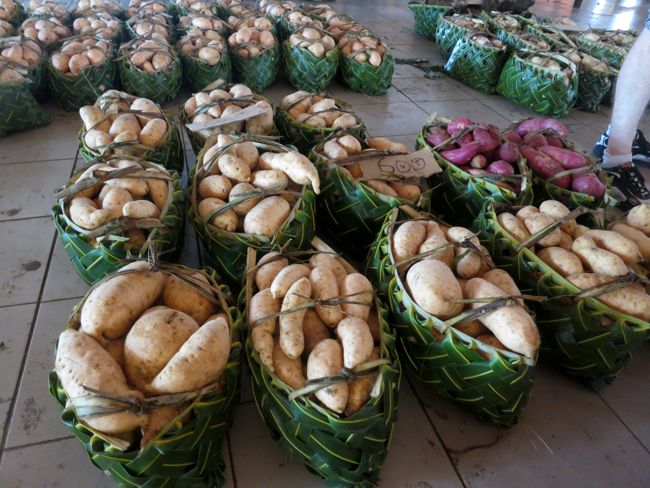
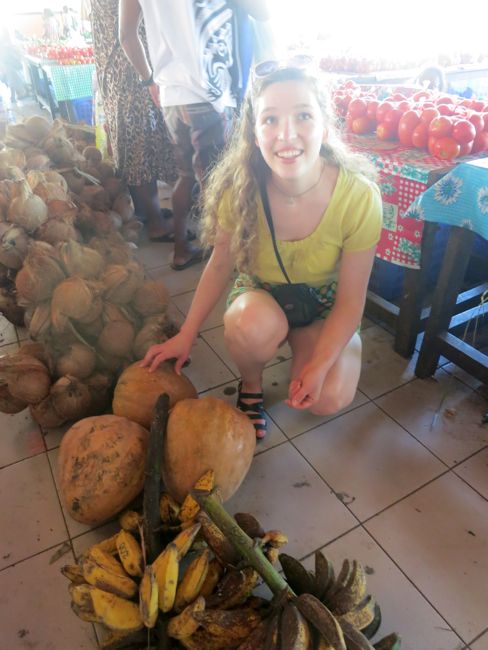
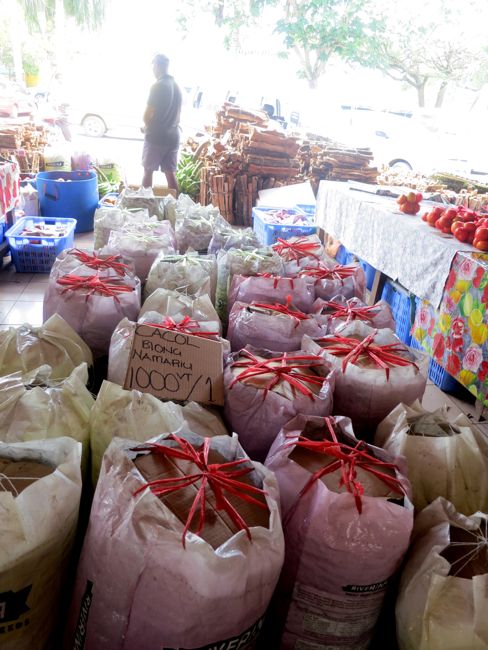

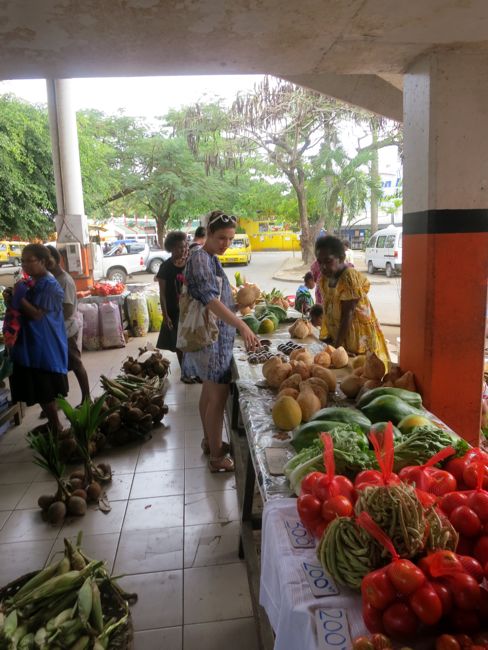
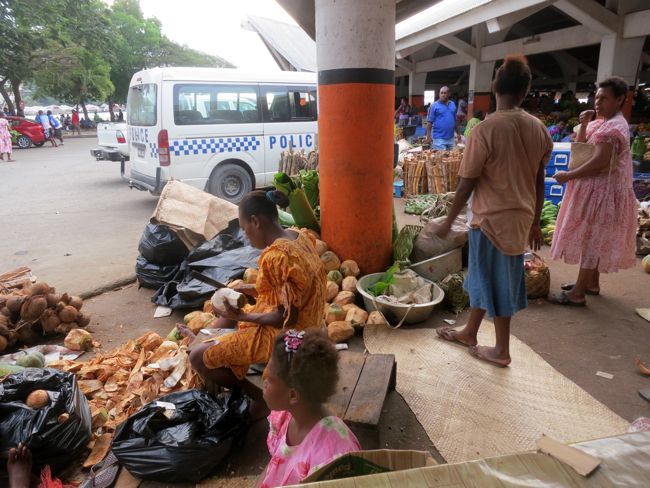
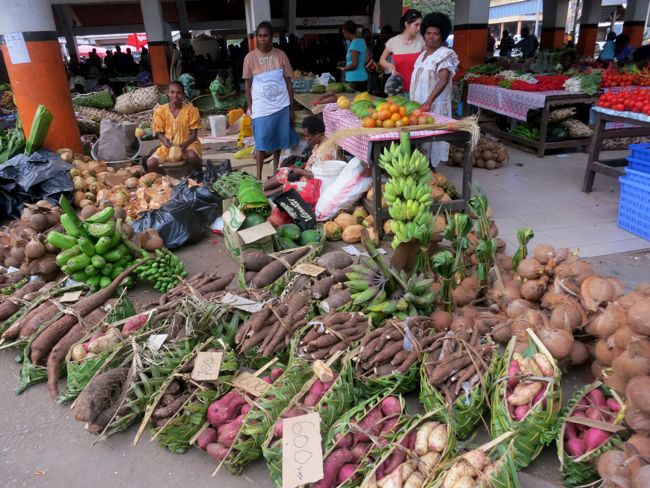
I like markets! Thanks for post. Do they sell sea-food there?
Markets are the best! Thank you for sharing. While I was familiar with several tropical fruits and veggies thanks to my dad’s insistence that I learn Mexican cooking, moving to Hawaii and working at a market there was an education to say the least!
Tell me, how in the heck did they grow such lovely tomatoes? Aren’t they almost impossible to grow well in HI?
You can grow amazing cherry tomatoes in Hawaii (the summer I graduated we had so many cherry tomatoes we had a 4 gallon bowl of fresh homemade salsa at my party), but its hard to grow real ones because of fruitflies. Vanuatu apparently doesn’t have fruitflies! It means they can also grow watermelons and cucumbers organically.
Man. I bet the watermelons are incredible!
4 gallons–weeeeeee!
What an amazing wonderland of produce!
There are a lot of things there that I’d never heard of, and a lot that I’ve heard of but never tasted. It makes the farmers markets here in Canada look rather pathetic, especially the fruit selection.
Those ladyfinger bananas are so cute!
This is so beautiful! Lots of people besides your parents will enjoy this post. 🙂 It’s neat to see so much beautiful produce, and produced and displayed in such a natural way. You look so happy, it’s great you got to take some time off. I hope Mr. D enjoyed himself at the presumably less-germy beach. 🙂
I spent a couple of months in Korea, the local market was one of my very favorite places to visit. It was huge and meandered between buildings, like a maze of awesome food, and friendly people. It was a pretty magical feeling, wandering there.
Oh, that was just beautiful!
What a dream, to be able to buy so many fresh fruits and vegetables. I wish I had my time as a gardener over again – I came late to vegetable gardening.
Yum! I miss slabs of crunchy coconut, and sticks of sugar cane, and the smoky smell of roasted peanuts…
Chokos in a pie with cinnamon tastes just like apple pie, incidentally, but peeling it raw is a real pain – you end up with a sort of film tightening over your hands as it dries. Good for retarding fingerprints but not much else!
Your description makes shopping at the Port Vila Market sound like a wonderful journey of discovery. I’m unlikely to take a vacation in the South Pacific myself, but if I ever do it’s a place I’d like to visit.
Good thing this post stopped when it did, because I’d start to cry. I feel your pain over not being able to cook. So much wonderful produce! Lots of which I never get to see here. Some can be had, though with less variety. Pamelos are my sister and her husband’s favourite, a staple at any party they are part of, and I’m quite fond of them, too. Oh, and unroasted peanuts are really hard to get here, but so delicious when you manage!
I’ve stayed for a few weeks in Vanuatu, and I adored the market too. Pretty much all that you say about it matches my memories! I bought my elopement flowers from the market – the resort offered to do the same, but I thwarted their plans to charge me $120 for a $1.20 bouquet…
I found the rasberries disappointing. Gorgeous, but no flavour! On the other hand, the market gave me the opportunity to try other tropical fruits that I’d never encountered before.
Chokos.
Back in the days when Gordon Ramsay was the Celebrity Chef of the Moment, he appeared on “Enough Rope” with Andrew Denton.
[episode 178 28 July 2008]
Andrew showed him a choko……
GORDON RAMSAY: Gees, what is that?
ANDREW DENTON: It’s a vegetable, it’s known as . . .
GORDON RAMSAY: Serious?
ANDREW DENTON: . . . dunny fruit because it often grows on vines outs- on outside toilets in Australia.
GORDON RAMSAY: Serious?
Laughter
GORDON RAMSAY: It looks like sort of Shrek’s s**t.
[transcript source abc.net.au]
That market is amazing.
Look how the curved roof beams resemble a whale’s rib cage,
like you are all in the belly of Jonah’s whale.
PS: Great pictures of 1920s clobber on this genealogy blog, especially the woman sitting regally in a chair.
http://pastprologue.wordpress.com/2009/02/08/fashions-of-the-1920s/
I loved the market when I went with Julie and Angela — so much great stuff there. Thanks for letting me re-live it!